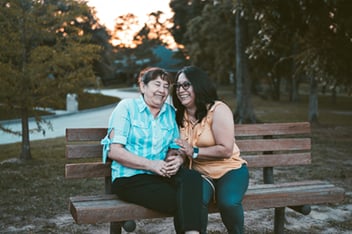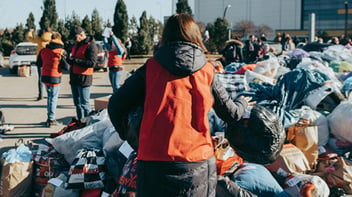This article originally appeared on www.mavanetwork.org and is featured here in partnership with the Minnesota Alliance for Volunteer Advancement.
![]()
By Lisa Joyslin, Minnesota Alliance for Volunteer Advancement
Cities across the country are taking a new look at involving newly immigrated volunteers to assist the city.
But this raises the question: how can cities best engage the diversity of the city in volunteering?
To provide resources for cities on this topic, the Minnesota Association for Volunteer Advancement (MAVA) interviewed 12 volunteers who had immigrated to the United States to gain their insights on volunteering. This was done as part of the MAVA initiative on city volunteer engagement.
From these interviews, MAVA gained insights into:
- Why people who moved to the United States might be interested in volunteering for a city
- What makes for a good volunteer experience?
- Suggestions for cities on involving new Americans as volunteers.
Let's now dive into the 10 key findings of these interviews.
1. Build Authentic Relationships
Take time to reach out and talk with people within the immigrant communities of your city. Volunteers suggested that this could start with stopping at a neighborhood ethnic grocery and asking who it would be good to talk with, or going to a community cultural event or to a meeting of an association of immigrants and showing your interest. Find leaders in the cultural communities who interested in helping their community connect with city.
2. Host Gatherings
Learn what the cultural communities are interested in and host gathering to provide information on that topic. Show that you are interested in reaching out on what interests their community. Hold the first gathering at a community location that is familiar to the people you are inviting. Volunteers suggested this as next step to building relationships.
3. Communicate and Encourage Full-Community Involvement
Broadly communicate that the city welcomes volunteer involvement from the full community. Ask the local cultural community associations to help get that word out that the city wants their involvement. Find a community leader who is interested in connecting with the city and ask his/her help to spread the word.
Encourage city staff to personally ask people they know to get involved. Put flyers up in locations your target audience will see. MAVA learned from volunteers that they know of people who would like volunteer, but do not know how to do that, and if their help would be welcome.
4. Consider The Motivations of Newly-Immigrated Volunteers
Understand that there are good reasons that immigrants might want to volunteer for the city. The main motivation for volunteering that we heard from city volunteers was to help.
We also heard from city volunteers that volunteering was a very good way to learn how the city works, what events are happening, and other important things to know in a new country.
Volunteering was also seen as way to get a local reference, fill time while waiting for employment status or in retirement, and to be healthy. Interestingly, some of volunteers indicated that they volunteered to be a good example to their children as participating in the community. Several volunteers mentioned volunteering is a way to give back for the helped they got when new in the country. Others talked about how they loved their community and America and wanted to make the community for good their family and others.

Like this article?
Get more like it, plus access to exclusive reports, training, and networking events by joining MAVA's network of Volunteer Engagement Professionals.
5. Be Mindful of Barriers
Be aware there may be barriers for many immigrants to volunteering, such as working two jobs, family commitments, language and transportation that might limit availability to help.
Expect that some people will be too busy to volunteer. For others, try to work around those barriers with flexible times for volunteering, family friendly volunteering, and openness to doing things in a different way.
While people of all ages and incomes are volunteering, one person told us that, in general, people who are younger or better educated, may be more aware of volunteering.
6. Follow Up With Interested People
Make sure that someone is assigned to follow up with people who express an interest in volunteering for the city. The volunteers told us how important it was to have someone that was well organized to guide their work. We learned that in immigrant communities people have had experienced offering to volunteer and not heard back from the organization. If there is not a response the first time a person expresses interest, he/she may not come back again.
7. Match Volunteers Based on Skills and Interests
Take time to talk with a prospective volunteer about their interests, experience, education and previous work. Volunteers spoke with excitement when volunteering for a city gave the chance to work in an area they had studied, such as the environment or when a volunteer position was matched for a personal interest, such as meeting people. Volunteers also told MAVA how discouraging it is when education and experience in the country they came from is not asked about or valued.
8. Be Flexible
Recognize that you may need to do things in a different way to appeal to the diversity of your community. Ask questions if there is way to overcome barriers such as transportation. Possibly, the volunteering can be done at location close to their home. Learn about the culture and be ready to adapt to fit their expectations.
9. Get Organized and Share Impact
Be well organized and make sure that volunteers can see the impact of what they are doing. Volunteers told us how discouraging it is to take the time to help, and not have their time used well. A main reason that volunteers told MAVA they would continue volunteering after trying it once was if they could see the impact of what they were doing.
10. Provide a Welcoming Atmosphere
Make sure that staff understand the cultures of volunteers and are welcoming. When volunteers described what made a good volunteer experience a top reason was the people were nice, were welcoming and showed appreciation to them.
Thank you to:
• The volunteers who shared their thoughts and experiences in volunteering
• The Cities of Brooklyn Park, Burnsville, Roseville and Plymouth for help setting up the interviews
• Marlene Stumpf-Johnson, Osseo Area Schools ISD 279 Adult Basic Education Volunteer Coordinator for setting up interviews with two of her volunteers
• Brunhilda Nabang for sharing the results of the research she did on volunteerism in the Minnesota Cameroon community for her Master’s Degree from Hamline University
• The Bush Foundation for funding this initiative





